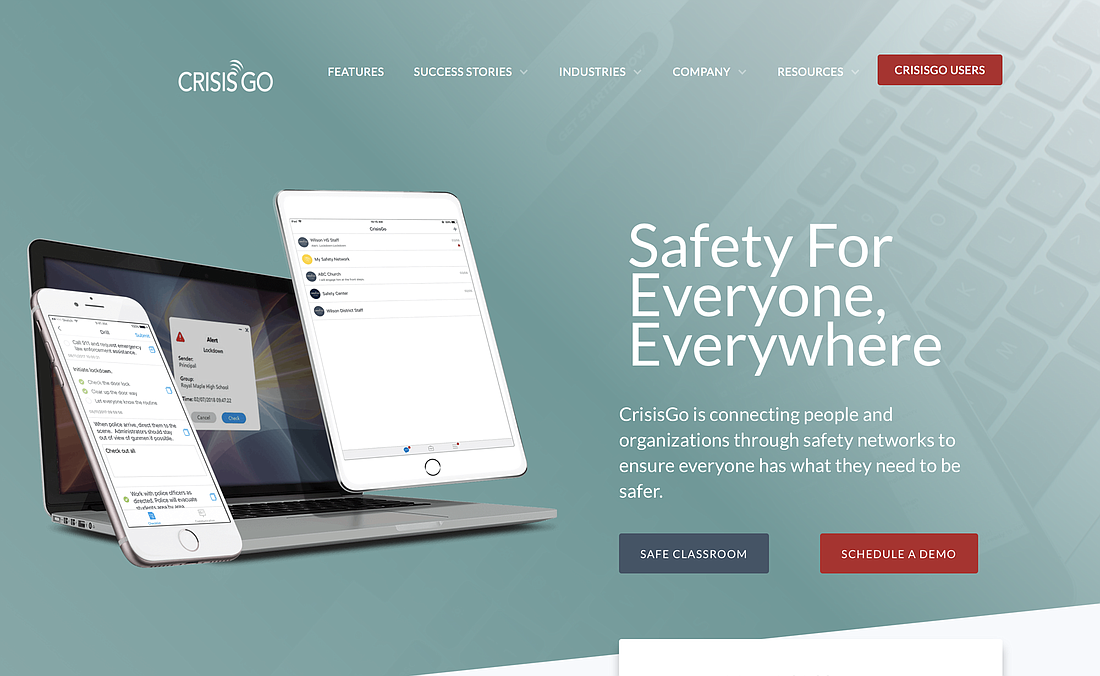- April 8, 2025
Your free article limit has been reached this month.
Subscribe now for unlimited digital access to our award-winning local news.

A software program piloted in Flagler Schools places a panic button on teachers' and school staff members' cell phones, tablets and computers.
The program, called CrisisGo and developed in 2013, is a "comprehensive safety platform" designed to let people communicate in an emergency, according to https://www.crisisgo.com. The program costs $800-$1,000 per school per year, and the district has invested $3,450 in the pilot program, which began May 1 at Flagler Palm Coast High School, Matanzas High School, Buddy Taylor Middle School and Wadsworth Elementary. District staff is interested in expanding the pilot program to all district schools, and will then have to determine whether to continue using CrisisGo after the pilot program ends.
"A teacher can ... initiate a panic [alert], so if there's a medical emergency, if there's a fight in the classroom, they can hit a panic button that will then go to the administrators, it will go to a school resource officer."
— DAVID KAVLICK, CrisisGo regional sales manager
"It's module-based, so that makes it very flexible," CrisisGo Regional Sales Manager David Kavlick told the School Board during its meeting Aug. 20.
It's in about 16,000 schools around the county, including in several counties in Florida: Pasco, Hernando and Martin, he said.
"A teacher can ... initiate a panic [alert], so if there's a medical emergency, if there's a fight in the classroom, they can hit a panic button that will then go to the administrators, it will go to a school resource officer, so that they can then open a two way conversation with what's happening," Kavlick said. "If that teacher has to flee the classroom, there's also GPS on that device so it will follow that teacher to wherever they're going so that they can be found if they need to be found."
CrisisGo's emergency management platform includes different modules for different kinds of incidents, he explained: the general "panic alert" module, plus individual modules for specific types of incidents.
Sheriff's Office deputies would also be able to initiate a lockdown in the schools from their patrol cars, Kavlick said.
"It's one of those things that you can see and visualize, and now the technology is there."
— COLLEEN CONKLIN, School Board member
After an incident, a "check-in" feature could be used to account for people and aid in the reunification process.
The program also includes an optional feature that districts could request that would provide students with an app called "Safe to Speak," from which to anonymously report bullying. It would also give students access to a panic button feature which would also activate GPS once pressed.
School Board members Colleen Conklin was especially interested in the student feature, which happened to be one the district hasn't piloted, though it hopes to add it the future. But she also expressed a concern: that, because the state already requires all school districts to use the FortifyFL safety program, and the district has also initiated its own "See Something, Say Something" campaign and reporting service, adding CrisisGo might be pushing people in too many different directions. The district will need to make sure the programs are integrated, she said.
District Superintendent James Tager said that FortifyFlorida is a reporting service, while CrisisGo is more sophisticated and has the panic button feature.
"Every adult can hit an alert if there is an issue," Tager said. "That is, to me, a big part of student safety."
Board member Andy Dance was impressed by the program's potential. "I think the full package is ultimately where we need to be," he said. "It sounds like a good tool."
Conklin suggested district staff return in nine weeks with an update for the board.
Your free article limit has been reached this month.
Subscribe now for unlimited digital access to our award-winning local news.